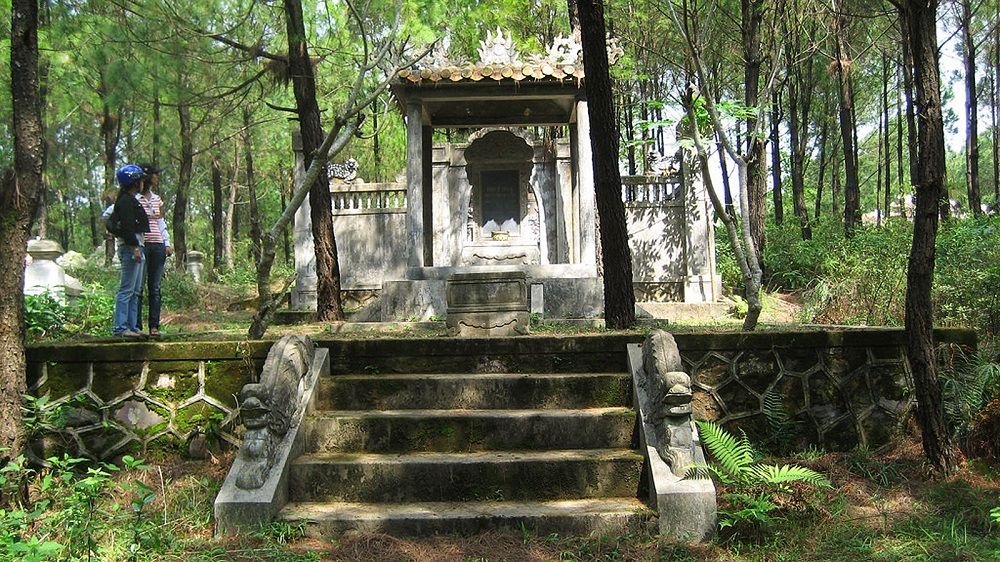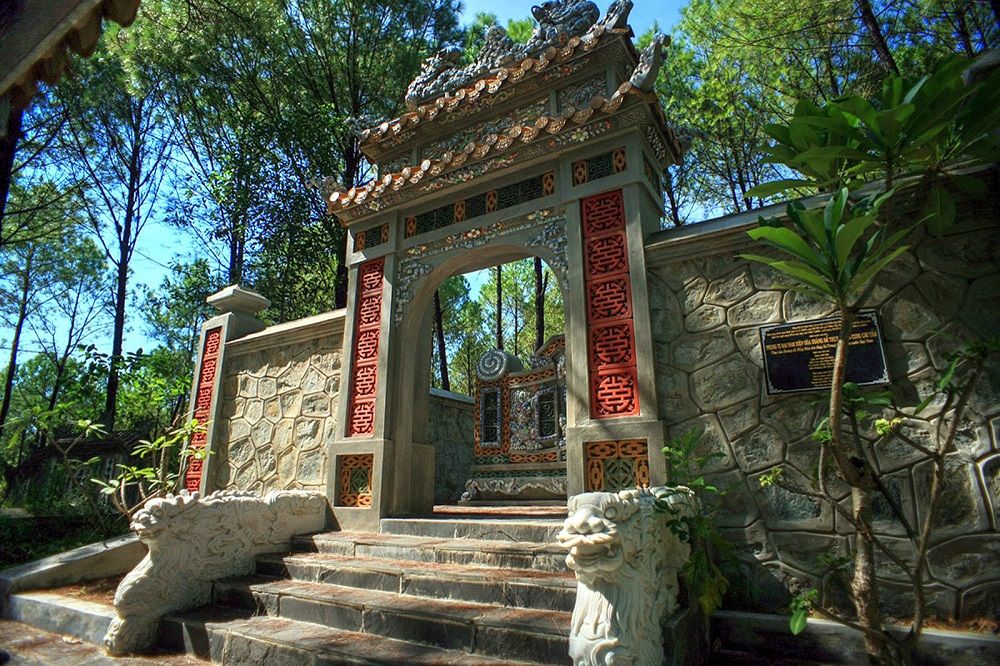
The tomb of King Hiep Hoa before being restored
Previously, Hiep Hoa king's tomb was just a small tomb located in the middle of a green pine forest. At the time of his death, Hiep Hoa king was only buried according to the ritual of Quoc Cong, so the tomb was built quite simply. The tomb of the King is only about 30m2, with a roof of tile, 2 steps up, in the middle is a small cement stele engraved with a few words of National Language: Hiep Hoa King, Nguyen Phuc Hong Dat - Born on September 24, the year of the Smell (November 1, 1847) - Died on October 30, the year of the Quy Mui (November 29, 1883).
The back of the stele has four verses in Chinese characters of Tu Duc king, which translates as: "My brother was fourteen - His eager to learn very few people have - Except for Kien Thuy Cong - Now there is only Van Lang".
Behind the stele is the entrance to the tomb with two sentences written in Chinese characters. The sentence on the right is that of King Hiep Hoa, who evaluates himself: "The noble prince has a mediocre quality of ten thousand incompetents", which translates as: "The beloved youngest son of the king has a mediocre quality that cannot take the throne".
The sentence on the left is from the Secret Institute: "All prays for earth and heaven to be taken care of as good as the gentle Van Lang Cong", translated as: "Cỏngatulate Van Lang Cong successfully completed the ceremony at the Xa Tac esplanade".
Behind the screen, there is a double-edged image of double dragons fighting with porcelain.
In 2013, Hiep Hoa King's tomb was greatly restored by a group of Hue people in Ho Chi Minh City. Ho Chi Minh City and Da Nang have mobilized donations through the Van Lang Quan Vuong Office to renovate and rebuild the more spacious mausoleum area as it is today.

Hiep Hoa king's mausoleum today is rebuilt spacious, ensuring the standard of a tomb area of the king
Hiep Hoa King's tomb area currently includes the main items such as Tomb, pavilion, pavilion yard, middle road, pillar, screen, visible dragon, and hidden dragon... Although lacking a number of factors such as Minh Duong, Tien An, Hau Pham but in general, the mausoleum still carries the standard of a tomb of the Nguyen king more than 100 years ago.
In November 2016, Hiep Hoa King Mausoleum was recognized as a provincial historical and cultural relic.